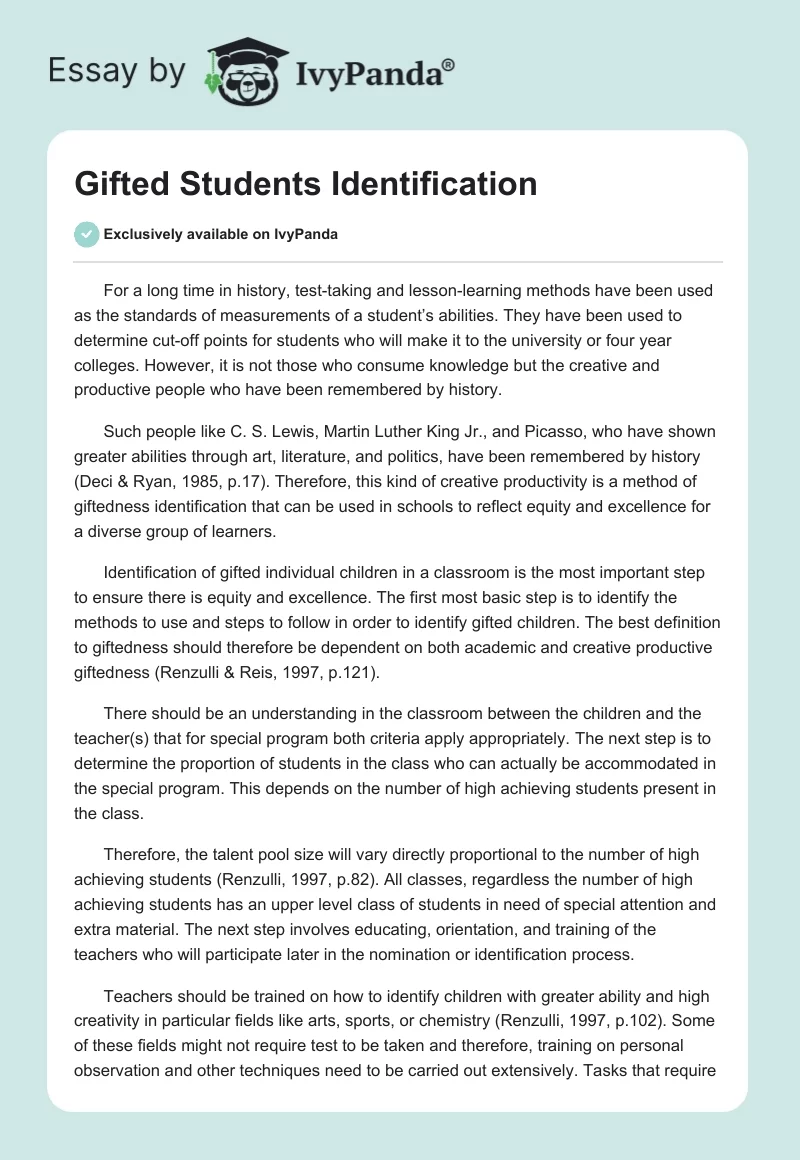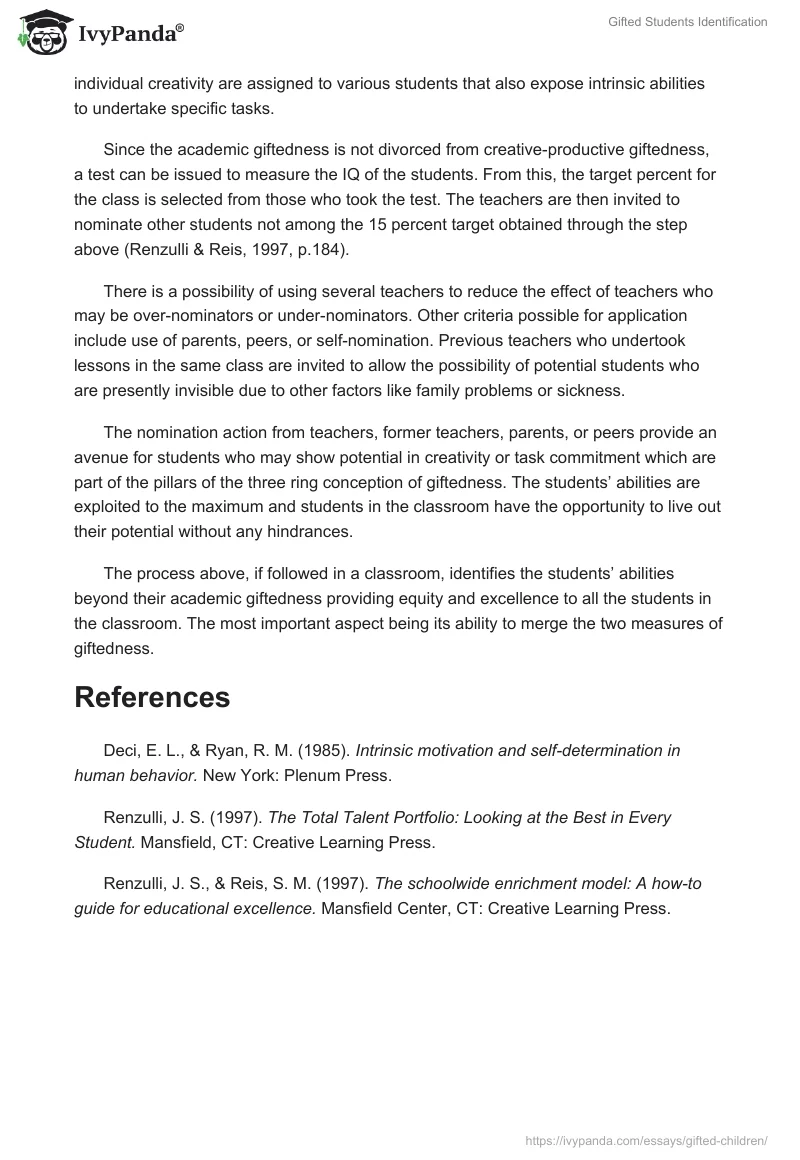For a long time in history, test-taking and lesson-learning methods have been used as the standards of measurements of a student’s abilities. They have been used to determine cut-off points for students who will make it to the university or four year colleges. However, it is not those who consume knowledge but the creative and productive people who have been remembered by history.
Such people like C. S. Lewis, Martin Luther King Jr., and Picasso, who have shown greater abilities through art, literature, and politics, have been remembered by history (Deci & Ryan, 1985, p.17). Therefore, this kind of creative productivity is a method of giftedness identification that can be used in schools to reflect equity and excellence for a diverse group of learners.
Identification of gifted individual children in a classroom is the most important step to ensure there is equity and excellence. The first most basic step is to identify the methods to use and steps to follow in order to identify gifted children. The best definition to giftedness should therefore be dependent on both academic and creative productive giftedness (Renzulli & Reis, 1997, p.121).
There should be an understanding in the classroom between the children and the teacher(s) that for special program both criteria apply appropriately. The next step is to determine the proportion of students in the class who can actually be accommodated in the special program. This depends on the number of high achieving students present in the class.
Therefore, the talent pool size will vary directly proportional to the number of high achieving students (Renzulli, 1997, p.82). All classes, regardless the number of high achieving students has an upper level class of students in need of special attention and extra material. The next step involves educating, orientation, and training of the teachers who will participate later in the nomination or identification process.
Teachers should be trained on how to identify children with greater ability and high creativity in particular fields like arts, sports, or chemistry (Renzulli, 1997, p.102). Some of these fields might not require test to be taken and therefore, training on personal observation and other techniques need to be carried out extensively. Tasks that require individual creativity are assigned to various students that also expose intrinsic abilities to undertake specific tasks.
Since the academic giftedness is not divorced from creative-productive giftedness, a test can be issued to measure the IQ of the students. From this, the target percent for the class is selected from those who took the test. The teachers are then invited to nominate other students not among the 15 percent target obtained through the step above (Renzulli & Reis, 1997, p.184).
There is a possibility of using several teachers to reduce the effect of teachers who may be over-nominators or under-nominators. Other criteria possible for application include use of parents, peers, or self-nomination. Previous teachers who undertook lessons in the same class are invited to allow the possibility of potential students who are presently invisible due to other factors like family problems or sickness.
The nomination action from teachers, former teachers, parents, or peers provide an avenue for students who may show potential in creativity or task commitment which are part of the pillars of the three ring conception of giftedness. The students’ abilities are exploited to the maximum and students in the classroom have the opportunity to live out their potential without any hindrances.
The process above, if followed in a classroom, identifies the students’ abilities beyond their academic giftedness providing equity and excellence to all the students in the classroom. The most important aspect being its ability to merge the two measures of giftedness.
References
Deci, E. L., & Ryan, R. M. (1985). Intrinsic motivation and self-determination in human behavior. New York: Plenum Press.
Renzulli, J. S. (1997). The Total Talent Portfolio: Looking at the Best in Every Student. Mansfield, CT: Creative Learning Press.
Renzulli, J. S., & Reis, S. M. (1997). The schoolwide enrichment model: A how-to guide for educational excellence. Mansfield Center, CT: Creative Learning Press.


